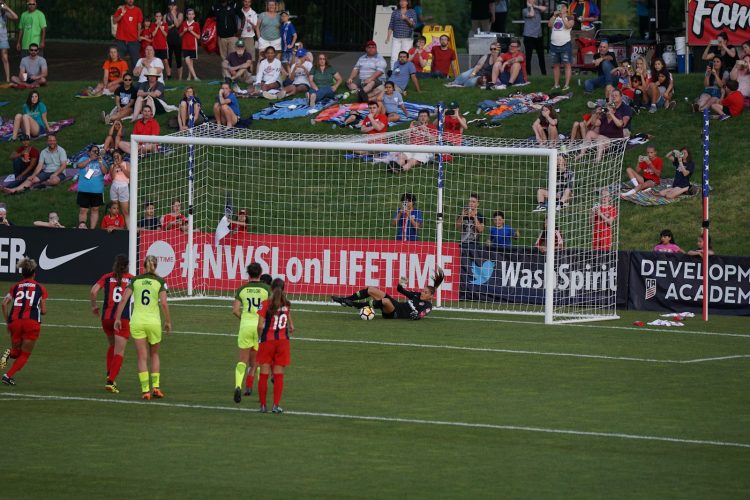Sports, in all their forms, have long been a source of entertainment, excitement, and intense competition. Fans cheer from the stands or their homes, caught up in the thrill of victory or the agony of defeat. But beyond the immediate action and emotional highs and lows, there is a deeper, analytical layer to sports that often goes unnoticed by casual viewers. Analyzing a sports game is more than just understanding the basic rules or observing who scored the most points; it is an intricate art that requires a deep understanding of the game, its strategies, and its players. This essay delves into the various aspects of sports analysis, exploring how it can be done effectively and how such analysis contributes to a greater appreciation of the game.
Understanding the Game: The First Step in Analysis
The first and most essential step in analyzing any sports game is having a solid grasp of the rules and the nuances of the sport in question. Whether it is basketball, soccer, football, or tennis, each sport has its own set of rules that govern the play, strategies, and objectives. A basic understanding of the game is crucial for interpreting the events that unfold during a match.
However, true sports analysts go beyond merely knowing the rules. They immerse themselves in the tactics, strategies, and roles of each player on the field or court. For example, in football, understanding the difference between a 3-4 defense and a 4-3 defense, or knowing how a quarterback’s decision-making process works, can provide deeper insights into the flow of the game. Similarly, in basketball, a sharp analyst would know the significance of pick-and-roll plays, the impact of a zone defense versus man-to-man, and how a team’s offensive spacing can change the tempo of a game.
In-depth knowledge allows analysts to better interpret the actions of the teams and players, identifying the strategies at play, and recognizing when something is deviating from the expected norms. For example, a seemingly simple turnover could be indicative of poor decision-making, excellent defense, or a failure in execution. Without this foundational understanding, it becomes difficult to make sense of the ebb and flow of a game.
Player Performance: The Heart of Sports Analysis
When watching a game, one of the most crucial components of analysis is evaluating the performance of individual players. Sports are played by humans, and thus, each player brings their own unique style, strengths, and weaknesses to the game. A key part of analysis involves recognizing and evaluating the impact that each player has during the course of a match.
Player performance analysis can be approached from a variety of angles, but one of the most effective ways is through statistical analysis. Modern sports are often driven by data, and analysts can break down every aspect of a player’s performance, from goals scored to defensive plays made. For instance, in basketball, statistics such as shooting percentages, assists, rebounds, and turnovers all provide valuable insights into how well a player is performing. Advanced metrics like Player Efficiency Rating (PER) and Win Shares allow analysts to evaluate players in a more comprehensive and sophisticated manner.
However, numbers alone don’t tell the entire story. In-depth analysis requires looking beyond the stats and observing the player’s decision-making, positioning, and mental fortitude. For instance, a soccer player’s passing accuracy can be high, but their ability to make intelligent runs and create space for teammates can be just as important. A player who scores a goal may be credited with a successful outcome, but analyzing the circumstances leading up to that goal—such as the movement off the ball, the timing of the pass, and the way the defense was broken down—can provide a richer understanding of the moment.
Moreover, the psychological aspect of performance cannot be overlooked. How does a player respond to pressure? How do they recover from a mistake or a missed opportunity? Mental toughness, leadership, and emotional intelligence are crucial factors that often determine a player’s success or failure, yet they are not always captured in the box score. An effective analysis involves understanding how a player’s mindset influences their performance on the field.
Team Dynamics: Beyond Individual Performance
While individual performance is important, sports are, by nature, team-oriented. A complete analysis requires examining how the team functions as a unit. This includes how players interact, communicate, and execute the team’s strategy as a cohesive entity. The best teams are those that not only have talented individuals but also operate with synergy, complementing each other’s strengths and covering each other’s weaknesses.
In team sports like football or basketball, one of the most important aspects to analyze is how the team plays within the system established by the coach. In football, this could involve understanding how well a team executes its offensive or defensive schemes, such as the effectiveness of a spread offense or a zone defense. In basketball, analysts may look at how well a team works together on defense, rotates to cover open shooters, or spaces the floor on offense to create opportunities.
The concept of “team chemistry” is often intangible but is crucial for success. Teams that function well together on the field tend to have strong communication and trust among players. Effective team dynamics are often the result of a coach’s ability to foster a positive atmosphere, where players understand their roles and execute the game plan. Analyzing team dynamics includes evaluating how well players adhere to their assigned roles, communicate during critical moments, and work to help one another succeed.
The Role of Strategy and Tactics in Sports Analysis
Strategy and tactics are the cornerstone of any sports game, and analyzing these elements requires a high level of sophistication. The difference between winning and losing can often come down to the decisions made by coaches and players during the course of the game. A good analyst will be able to discern what strategic decisions are being made and how those decisions are impacting the flow of the game.
In football, for instance, coaches may opt to run a certain play based on the opposing team’s defensive tendencies. This could involve analyzing the defense’s alignment, studying their reaction to previous plays, and then making adjustments in real-time. Similarly, in soccer, a coach may switch from a defensive 4-4-2 formation to a more offensive 4-3-3 to put more pressure on the opponent, a move that will change the team’s approach to both attacking and defending.
Tactics also extend to in-game adjustments. A coach’s ability to make changes during a game—such as substituting players, altering formations, or calling timeouts—can significantly impact the game’s outcome. Analysts pay close attention to these decisions, evaluating their effectiveness in influencing the flow of the game. For example, if a team is struggling against an opponent’s defense, a tactical analysis might reveal that the team’s best option is to play with a faster pace or utilize a different type of offensive play.
The Impact of External Factors
Beyond the strategies and the players’ performances, there are external factors that influence the outcome of a game. These may include the weather, the condition of the playing field, referee decisions, or the home-court advantage. While not always directly controllable by the players or coaches, these factors can have a significant impact on the game’s dynamics and should be considered in any thorough analysis.
For instance, extreme weather conditions such as rain, wind, or snow can alter how teams play, particularly in outdoor sports like football and soccer. A team that excels in passing may find it difficult to perform in a wet and slippery environment, while a team that relies on physical play may thrive. The conditions of the playing surface—whether it’s a football field, a soccer pitch, or a basketball court—can also influence the way players execute their movements.
Similarly, the role of referees and officials in a game cannot be underestimated. Controversial calls or missed penalties often spark debate among fans and analysts alike. Evaluating how a referee’s decisions impact the flow of a game is an important part of analysis, as it offers insights into the psychological effects on players and teams.





